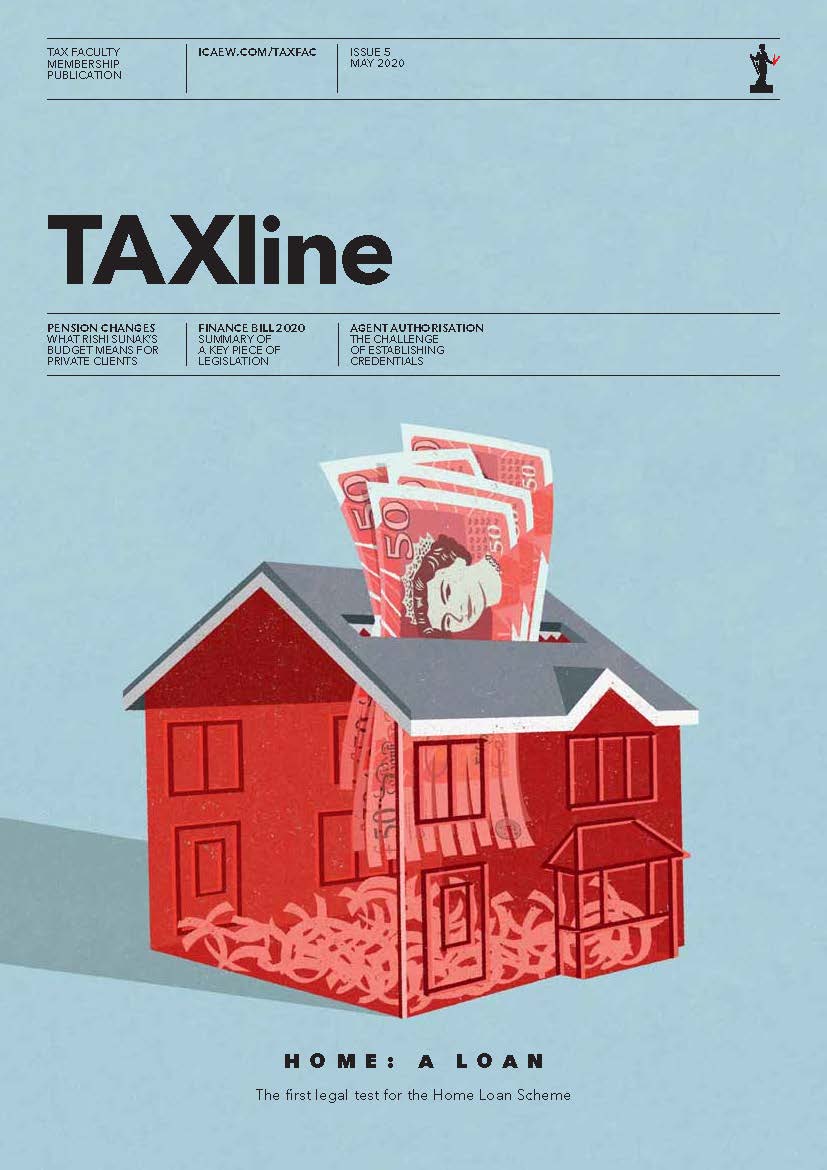With the first reporting deadline less than two months away, Simon Bird from BDO LLP talks through a risk-based approach to compliance with DAC 6, highlighting practical ways in which entities can recognise the classes of arrangements which might be subject to these rules.
DAC 6 is an EU Council Directive that requires cross-border financial arrangements which meet certain ‘hallmarks’ to be reported to local tax authorities who will then share the information with EU member states. UK reporting commences on 1 January 2021 with a 30-day reporting deadline thereafter.
It is important that affected entities develop a risk-based approach to compliance with DAC 6 and document decisions carefully. Internal procedures should seek to educate staff on red flags so affected arrangements can be identified and considered by appropriately trained team members.
Even where it is concluded that an arrangement is not reportable under DAC 6, this rationale should be documented carefully at the time. There are 19 hallmarks, and therefore many potential red flags from a DAC 6 perspective, but some of the key questions for business to consider are:
- Hallmark A1: Do your standard terms and conditions impose confidentiality on your clients?
- Hallmark A2: Do you provide any advice on a contingent fee basis?
- Hallmark B2: Do you advise on employee incentive plans or on rewarding senior staff?
- Hallmark C1: Do you advise on transactions that involve cross-border payments between associated enterprises?
- Hallmark C2: Do you advise UK companies on the availability of capital allowances or amortisation in respect of intangibles?
- Hallmark D2: Is there any uncertainty over who the beneficial owners are in respect of a particular structure or arrangement?
- Hallmark E1: Do you advise on cross-border arrangements that involve a rate set unilaterally by a national government?
- Hallmarks E2 & E3: Do you advise on transactions that involve a cross-border intra-group transfer of any function, asset or risk?
TAXbite: DAC 6 in brief
Overview of the EU Mandatory Disclosure Regime, covering: what is DAC 6; who it affects; what types of arrangements will be caught; what the reporting requirements are, and potential penalties.

Hallmark A1
Do your standard terms and conditions impose confidentiality on your clients? If so, have you considered the potential implications under Hallmark A1?
While Hallmark A1 is subject to the ‘main benefit test’ and should only apply where confidentiality is linked to how the tax advantage is achieved (as opposed to confidentiality clauses more generally), it is important for advisers to review their standard terms and conditions in their engagement letters to consider whether they could potentially fall within the scope of this hallmark.
When reviewing your standard terms and conditions it is also worth noting whether any updates should be made to reflect your own and your client’s respective obligations under DAC 6. This is because it is your personal obligation as an adviser to report (unless you are employed by an intermediary) should you decide that an arrangement meets the conditions of a reportable cross-border arrangement.
It may be wise to be explicit about this in any terms of engagement so there is no doubt that the client acknowledges such reports will be made when required.
Hallmark A2
Do you provide any advice on a contingent fee basis? If so, Hallmark A2 could be relevant to you.
Hallmark A2 may apply where the fee is contingent on either the tax advantage achieved or whether or not a tax advantage is actually derived from the arrangement. HMRC’s guidance states that this hallmark is deliberately broad in nature, to ensure all types of fees or other financial arrangements are captured.
Therefore, on the face of it, a contingent fee in respect of assisting a client with a future R&D claim could fall within the scope of the rules. However, given Hallmark A2 is subject to the main benefit test, it may mean that such advice does not fall to be reportable on the basis that any tax advantage is aligned to the policy objectives and principles of the R&D legislation.
HMRC’s guidance makes clear that this is not a blanket acceptance that R&D is outside the scope of the rules, and instead each arrangement or series of arrangements should be considered on its own merits. To the extent that the overall arrangements seek to artificially gain an entitlement to R&D then this may cause Hallmark A2 to be met.
Therefore, when providing advice on a contingent fee basis it is important that advisers carefully consider all the circumstances of the arrangement and document their rationale to support the position taken under DAC 6.
Hallmark B2
Do you advise on employee incentive plans or on the different methods of rewarding senior staff? If so, have you considered the potential implications under Hallmark B2?
Hallmark B2 applies where income is converted into capital or other types of income. On first reading of the rules this could be interpreted to include employee incentive and share option plans.
However, as Hallmark B2 is subject to the main benefit test, HMRC’s guidance states that this hallmark should not be applicable where the chosen option is a legitimate commercial choice, provided the arrangement does not involve additional, artificial steps which has the result of making the payments non-taxable.
Therefore, when providing advice on employee incentive plans or alternative methods of rewarding staff, advisers should carefully document the underlying commercial rationale of the arrangement and related steps to support the position taken on whether the arrangement is reportable under DAC 6.
Hallmark C1
Do you advise on transactions that involve cross-border payments between associated enterprises?
This is a key target area of DAC 6, where a number of sub-hallmarks are potentially in point under Hallmark C1.
Some of the various sub-hallmarks of C1 are subject to the main benefit test. Others are not, making it possible for benign arrangements to fall within the scope of DAC 6 and require reporting (eg, interest arising on an intra-group loan). The tests within C1 often focus on the recipient of the cross-border income and how it is treated for tax purposes. Examples include:
- where the recipient taxes the income at zero or nearly zero;
- where the payment benefits from an exemption or a preferential tax regime; or
- where the recipient is resident in a territory on the often-changing list of non-cooperative jurisdictions.
These are examples of tests that should be considered for each deductible cross-border payment arising under the arrangement.
Therefore, whenever advising on a cross-border payment, advisers should carefully work through all the C1 sub-hallmarks and document why each deductible payment between associated enterprises is not reportable – particularly where the main benefit test does not need to be satisfied.
Hallmark C2
Do you advise UK companies on the availability of capital allowances or amortisation in respect of intangibles? If so, have you considered whether such an arrangement may be caught under Hallmark C2?
Hallmark C2 applies where a deduction for the same depreciation on an asset is claimed in more than one jurisdiction. This can often be the case for UK subsidiaries of US parent companies, or UK companies owned by US individuals.
Where an election is made by the US shareholders to treat the UK company as disregarded for US federal income tax purposes, this may lead to capital allowances or tax depreciation and amortisation in respect of intangibles being claimed in both the UK and the US. Crucially, this hallmark is not subject to the main benefit test.
Therefore, advisers should carefully consider whether Hallmark C2 could apply where advising on the availability of capital allowances or amortisation, particularly for UK companies owned by the US, and properly document their analysis of the position taken for DAC 6 purposes.
HMRC’s guidance does provide some assistance in certain circumstances by stating that Hallmark C2 should not apply where income is also taxable in the UK and the US, but this may not always be the case depending on how the operations of the UK company are structured.
Hallmark D2
Do any of your clients have non-transparent legal or beneficial ownership chains making it difficult to identify the ultimate beneficial owners? If so, you should think carefully about the implications under DAC 6.
Hallmark D2 focuses on arrangements and structures where the beneficial ownership is unclear as there is limited substantive economic activity, the persons involved are based in a jurisdiction other than the jurisdiction of residence of one or more of the beneficial owners, and where the beneficial owners are made unidentifiable. This final test is based on whether the beneficial owners can reasonably be identified by relevant tax authorities, including HMRC. The guidance is clear that this does not impose a requirement for beneficial owners to be publicly available, but where they are listed on a public register this is clearly a helpful fact.
UK advisers will be used to identifying beneficial owners through the operation of Anti-Money Laundering (“AML”) legislation and so this is likely to be the first line of defence under DAC 6. However, advisers should remain vigilant, particularly in respect of owners who fall below the thresholds within the AML rules, and look out for similar red flags.
Trusts, undisclosed nominee shareholders, and particular jurisdictions where there is no requirement to keep ownership information should all act as red flags, and so advisers should consider ways in which DAC 6 reviews should be integrated into their existing AML checks and risk management process.
Hallmark E1
Do you advise on cross-border arrangements that involve a rate set unilaterally by a national government?
Hallmark E1 requires reporting where a cross-border arrangement involves unilateral safe harbour rules. It is not subject to the main benefit test and therefore reportable regardless of the tax benefit or motive.
From a UK perspective, advanced pricing agreements between two jurisdictions should not meet the definition of a “unilateral safe harbour” as they are bilateral agreements between countries, and equally the UK guidance confirms that the hallmark should not apply if the UK entity that is party to the arrangement is exempt from transfer pricing under the SME exemption.
However, this shows that use of safe harbours should act as a red flag as part of any DAC 6 risk management process, allowing advisers to identify transactions that could potentially fall within the scope of the rules and then documenting whether a disclosure should ultimately be made.
Hallmarks E2 & E3
Do you advise on transactions that involve a cross-border intra-group transfer of any function, asset (including shares), or risk?
Any cross-border transfer of functions, assets or risks is a clear red flag from a DAC 6 perspective as they are the target of Hallmark E2 (where the asset is an intangible) and E3 (for other functions, risks or assets, which would include shares). All such arrangements should, therefore, be carefully considered from a DAC 6 perspective, particularly as these hallmarks are not subject to the main benefit test.
Under Hallmark E2 the cross-border transfer must be of a hard-to-value intangible asset which, for these purposes, is defined as being where no reliable comparables exist, and the projections for future cash flow or income are highly uncertain.
For Hallmark E3 to apply, the transfer must lead to a greater than 50% reduction of EBIT of the transferor.
Both conditions require careful consideration in light of the specific facts. To the extent an adviser decides not to disclose an arrangement on the basis that the intangible is not hard to value, or that there is not a sufficient reduction in EBIT, it will be critical to document the analysis to support this position should it be challenged by HMRC.
Final considerations
Given the broad nature of the hallmarks and the fact that some will apply to arrangements even in the absence of a tax avoidance motive, it is essential that organisations implement appropriate procedures to identify transactions which might be caught by DAC 6 and mitigate the risk of penalties in the event any compliance failures come to light.
Training staff to remain vigilant and spot key red flags within your business will be a good starting point for implementing a risk-based compliance approach to DAC 6: you should ensure that decision-making rationale is documented in real time to support the positions taken under the DAC 6 rules.
Tax Faculty
This guidance is created by the Tax Faculty, recognised internationally as a leading authority and source of expertise on taxation. The Faculty is the voice of tax for ICAEW, responsible for all submissions to the tax authorities. Join the Faculty for expert guidance and support enabling you to provide the best advice on tax to your clients or business.


